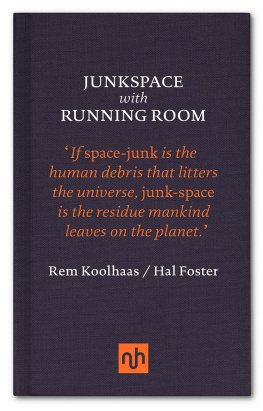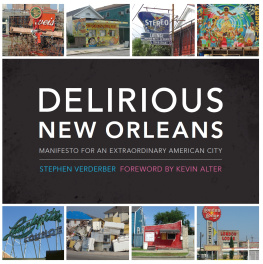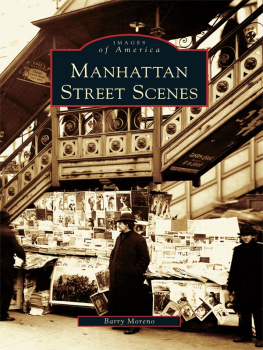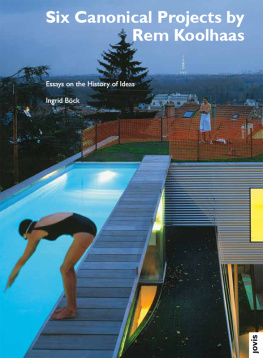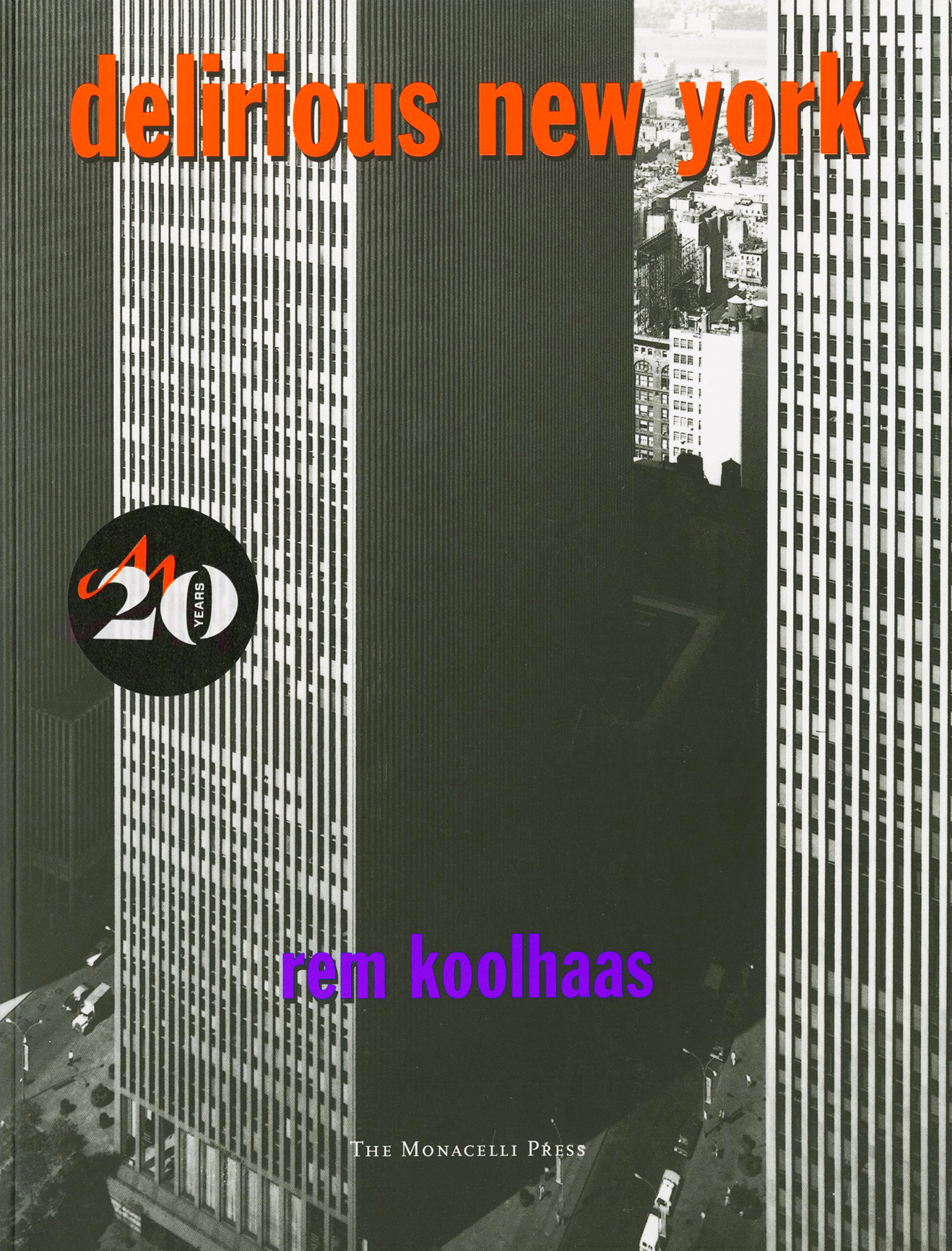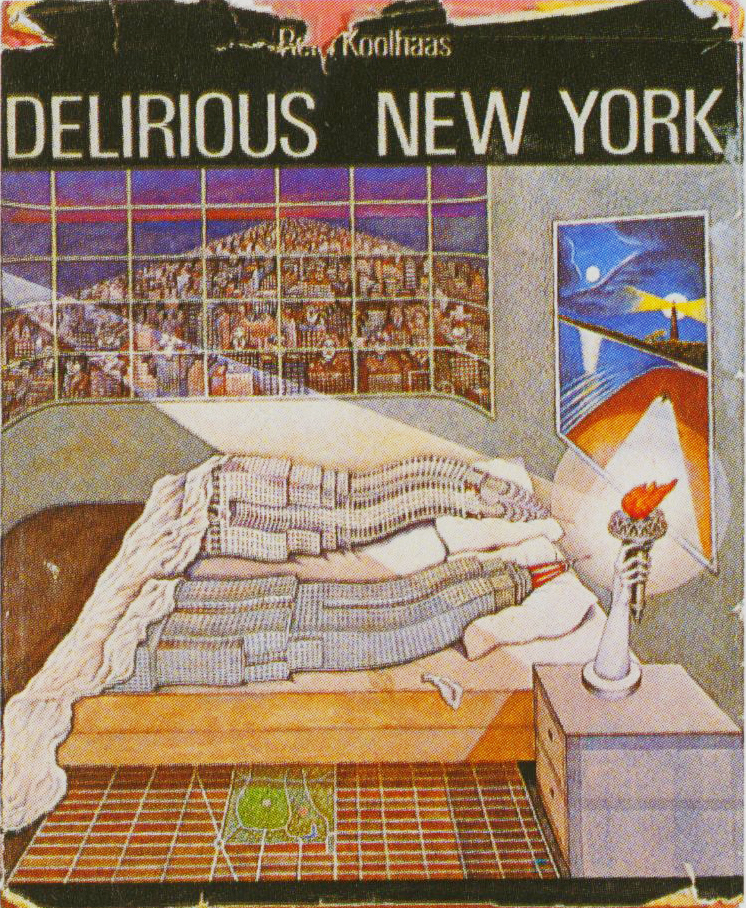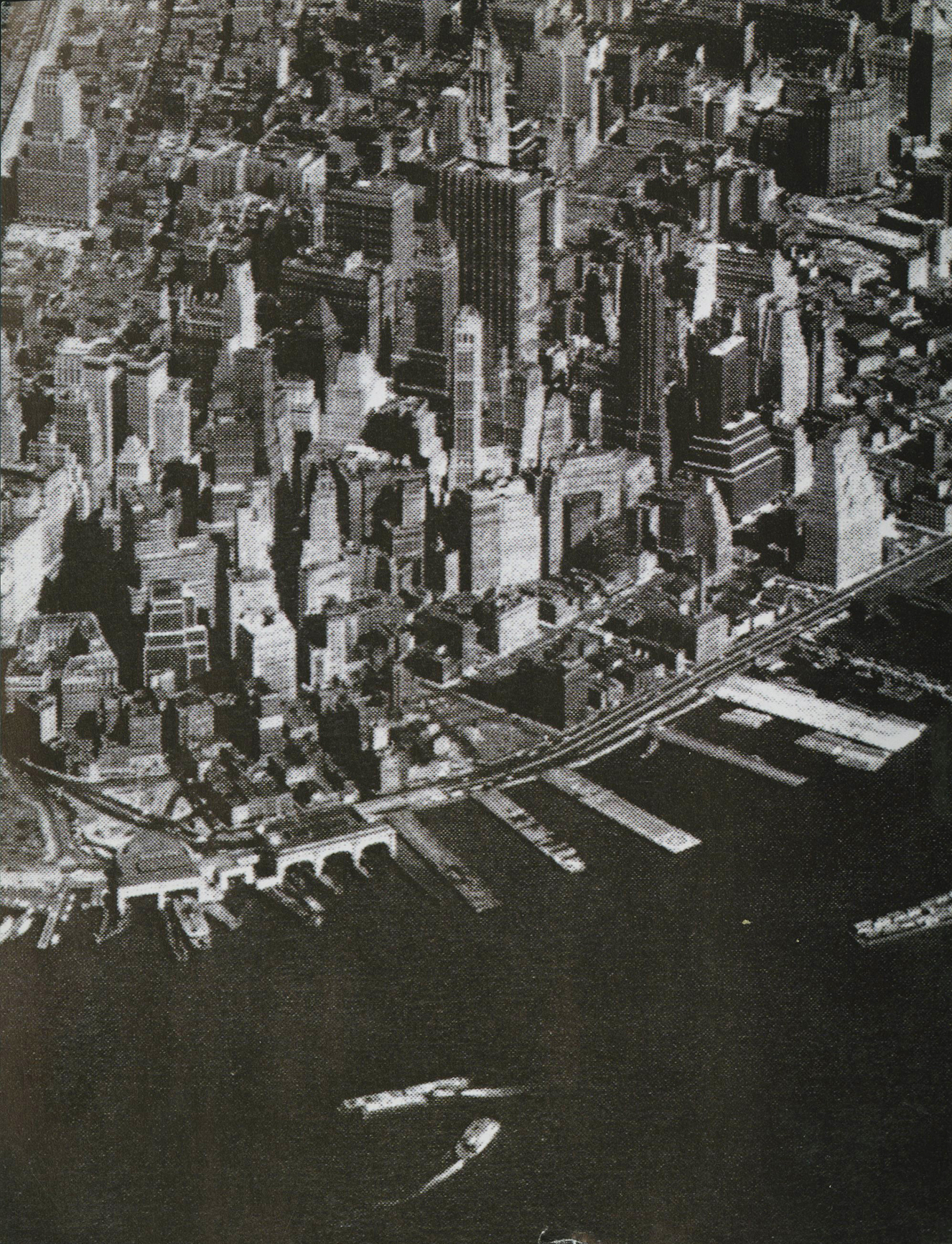New edition first published in the United States of America in 1994 by The Monacelli Press.
Copyright 1994 Rem Koolhaas and The Monacelli Press.
Digital edition 2014 Rem Koolhaas and The Monacelli Press.
All rights reserved.
Philosophers and philologists should be concerned in the first place with poetic metaphysics; that is, the science that looks for proof not in, the external world, but in the very modifications of the mind that meditates on it. Since the world of nations is made by men, it is inside their minds that its principles should be sought.Giambattista Vico,
MANIFESTO
How to write a manifesto on a form of urbanism for what remains of the 20th century in an age disgusted with them? The fatal weakness of manifestos is their inherent lack of evidence.
Manhattans problem is the opposite: it is a mountain range of evidence without manifesto.
This book was conceived at the intersection of these two observations: it is a retroactive manifesto for Manhattan.
Manhattan is the 20th centurys Rosetta Stone.
Not only are large parts of its surface occupied by architectural mutations (Central Park, the Skyscraper), utopian fragments (Rockefeller Center, the UN Building) and irrational phenomena (Radio City Music Hall), but in addition each block is covered with several layers of phantom architecture in the form of past occupancies, aborted projects and popular fantasies that provide alternative images to the New York that exists.
Especially between 1890 and 1940 a new culture (the Machine Age?) selected Manhattan as laboratory: a mythical island where the invention and testing of a metropolitan lifestyle and its attendant architecture could be, pursued as a collective experiment in which the entire city became a factory of man-made experience, where the real and the natural ceased to exist.
This book is an interpretation of that Manhattan which gives its seemingly discontinuous even irreconcilable episodes a degree of consistency and coherence, an interpretation that intends to establish Manhattan as the product of an unformulated theory, Manhattanism, whose program to exist in a world totally fabricated by man, i.e., to live inside fantasywas so ambitious that to be realized, it could never be openly stated.
ECSTASY
If Manhattan is still in search of a theory, then this theory, once identified, should yield a formula for an architecture that is at once ambitious and popular.
Manhattan has generated a shameless architecture that has been loved in direct proportion to its defiant lack of self-hatred, respected exactly to the degree that it went too far.
Manhattan has consistently inspired in its beholders ecstasy about architecture.
In spite or perhaps because of this, its performance and implications have been consistently ignored and even suppressed by the architectural profession.
DENSITY
Manhattanism is the one urbanistic ideology that has fed, from its conception, on the splendors and miseries of the metropolitan condition hyper- density without once losing faith in it as the basis for a desirable, modern culture. Manhattans architecture is a paradigm for the exploitation of congestion.
The retroactive formulation of Manhattans program is a polemical operation.
It reveals a number of strategies, theorems and breakthroughs that not only give logic and pattern to the citys past performance, but whose continuing validity is itself an argument for a second coming of Manhattanism, this time as an explicit doctrine that can transcend the island of its origins to claim its place among contemporary urbanisms. With Manhattan as example, this book is a blueprint for a Culture of Congestion.
BLUEPRINT
A blueprint does not predict the cracks that will develop in the future; it describes an ideal state that can only be approximated. In the same way this book describes a theoretical Manhattan, a Manhattan as conjecture,
of which the present city is the compromised and imperfect realization. From all the episodes of Manhattans urbanism this book isolates only those moments where the blueprint is most visible and most convincing. It should, and inevitably will, be read against the torrent of negative analyses that emanates from Manhattan about Manhattan and that has firmly established Manhattan as the Capital of Perpetual Crisis.
Only through the speculative reconstruction of a perfect Manhattan can its monumental successes and failures be read.
BLOCKS
In terms of structure, this book is a simulacrum of Manhattans Grid: a collection of blocks whose proximity and juxtaposition reinforce their separate meanings.
The first four blocks Coney Island, The Skyscraper, Rockefeller Center and Europeanschronicle the permutations of Manhattanism as an implied rather than explicit doctrine.
They show the progression (and subsequent decline) of Manhattans determination to remove its territory as far from the. natural as humanly possible.
The fifth block the Appendix is a sequence of architectural projects that solidifies Manhattanism into an explicit doctrine and negotiates the transition from Manhattanisms unconscious architectural production to a conscious phase.
GHOSTWRITER
Movie stars who have led adventure-packed lives are often too egocentric to discover patterns, too inarticulate to express intentions, too restless to record or remember events. Ghostwriters do it for them.
In the same way I was Manhattans ghostwriter.
(With the added complication that my source and subject passed into premature senility before its life was completed. That is why I had to provide my own ending.)

Manhattan: a theater of progress (small appendage near entrance to New York Harbor will later develop into Coney Island).
Prehistory
PROGRAM
What race first peopled the island of Manhatta?
They were but are not.
Sixteen centuries of the Christian era rolled away, and no trace of civilization was left on the spot where now stands a city renowned for commerce, intelligence and wealth.
The wild children of nature, unmolested by the white man, roamed through its forests, and impelled their light canoes along its tranquil waters. But the time was near at hand when these domains of the savage were to be invaded by strangers who would lay the humble foundations of a mighty state, and scatter everywhere in their path exterminating principles which, with constantly augmenting force, would never cease to act until the whole aboriginal race should be extirpated and their memorybe almost blotted out from under heaven. Civilization, originating in the east, had reached the western confines of the old world.


